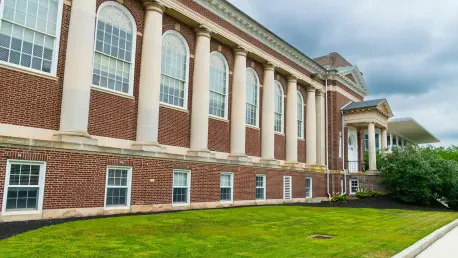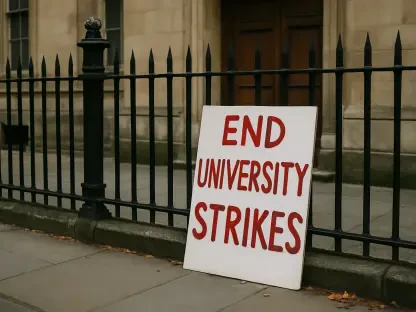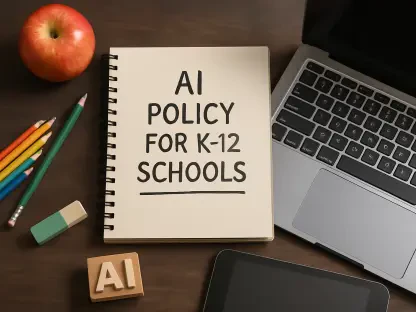In the heart of Pennsylvania, a financial crisis is unfolding across university campuses, reflecting a troubling national trend in higher education that threatens the very foundation of these institutions, from the bustling streets of Philadelphia to the quieter rural areas. Schools are wrestling with declining student enrollment, substantial cuts in federal and state funding, and unpredictable shifts in policy that create an environment of uncertainty. This perfect storm has left many institutions teetering on the edge, compelled to reevaluate their operational models to ensure survival. The stakes are high, as these universities are not just places of learning but also vital economic engines for their communities. As the numbers reveal a stark reality—a 15% enrollment drop between 2010 and 2021, according to the National Center for Education Statistics—the urgency to adapt becomes clear. For instance, Temple University alone has seen a loss of 10,000 students since 2017, translating to a staggering $200 million revenue shortfall. This situation raises critical questions about how these schools can navigate such daunting challenges.
Grappling with Shrinking Enrollment Numbers
The sharp decline in student enrollment stands as a central issue driving financial distress among Pennsylvania universities. With a shrinking college-age population, fewer students are walking through campus gates, directly impacting the tuition revenue that keeps these institutions running. Public universities like Penn State have experienced a dramatic 30% drop in enrollment at certain locations, creating a ripple effect that threatens the viability of entire campuses. This isn’t merely a statistical concern; it shapes the ability of schools to maintain academic programs, support faculty, and invest in infrastructure. The challenge lies in finding innovative ways to attract and retain students while managing the immediate financial fallout from these declining numbers, a task that demands both creativity and resilience in an increasingly competitive educational landscape.
Beyond the balance sheets, the enrollment decline affects the broader campus ecosystem in profound ways. Fewer students mean reduced demand for services, from dining halls to extracurricular activities, often leading to cuts that diminish the overall student experience. Additionally, the loss of diversity in student bodies can impact the cultural and intellectual vibrancy of a university. Institutions must now explore strategies such as expanding online offerings, targeting non-traditional students, or enhancing recruitment efforts in underrepresented regions. For schools like Temple University, which faces a massive revenue gap, these approaches are not just options but necessities to rebuild their student base and secure a sustainable future amidst ongoing demographic shifts that show no signs of reversal in the near term.
Navigating Funding Reductions and Policy Instability
Funding cuts at both federal and state levels have intensified the financial pressures on Pennsylvania universities, leaving many in a precarious position. Reductions in education and research budgets, combined with delays in state budget approvals, create significant hurdles for institutions like Lincoln University, a historically Black college that depends on state support for a quarter of its budget. Moreover, policy uncertainties—such as potential restrictions on foreign student enrollment or increased taxes on endowments—add layers of complexity to financial planning. These challenges paint a murky picture for administrators who must balance shrinking resources with the need to maintain quality education, often forcing tough decisions about where to allocate limited funds in an environment of constant flux.
The impact of these funding issues hits hardest among vulnerable student populations who rely heavily on financial aid. At Lincoln University, for example, an overwhelming 98% of students depend on federal programs like Pell Grants to afford their education. Delays in aid processing, exacerbated by staffing shortages at the U.S. Department of Education, create additional barriers for these students, risking their ability to stay enrolled. This situation underscores a critical need for stable and predictable funding mechanisms to support not just the institutions but also the diverse communities they serve. Without reliable financial backing, universities struggle to fulfill their mission of providing accessible education, particularly to those who see higher learning as a pathway out of economic hardship.
Adopting Cost-Reduction Strategies
In response to mounting deficits, many Pennsylvania universities are turning to aggressive cost-cutting measures to stabilize their finances. Layoffs have become a painful but common tool, with Temple University eliminating 190 positions to tackle a $60 million shortfall. Similarly, Penn State has made the difficult decision to close seven campuses by the 2026-27 academic year, a direct result of significant enrollment declines at those locations. These steps, while necessary for balancing budgets, often come at the expense of faculty and staff livelihoods, as well as the educational offerings available to students. The immediate goal is clear—trim expenses to match reduced revenue—but the long-term consequences on campus morale and academic quality remain a pressing concern for administrators.
Beyond staff reductions and campus closures, universities are exploring collaborative approaches to save costs without sacrificing core functions. Organizations like the Association of Independent Colleges & Universities of Pennsylvania (AICUP) facilitate resource-sharing initiatives, enabling schools to jointly purchase energy, software, and insurance at lower rates, resulting in millions in annual savings. This pragmatic strategy offers a lifeline to smaller institutions that might otherwise struggle to compete with larger counterparts. By pooling resources, these schools can redirect funds to critical areas like student support and academic innovation, demonstrating that cooperation can be a powerful tool in navigating financial hardship while preserving the essence of their educational missions.
Exploring Mergers and Permanent Closures
As financial challenges persist, mergers and closures have emerged as stark realities for some Pennsylvania universities seeking long-term sustainability. Since 2016, ten institutions in the state have either merged with others or shut down entirely, with notable cases like the University of the Arts in Philadelphia closing its doors in 2024 due to insurmountable insolvency. On the other hand, strategic mergers, such as Drexel University combining with Salus University, aim to leverage complementary strengths—Drexel’s robust research capabilities paired with Salus’s specialized health programs—to create more resilient entities. These consolidations reflect a broader shift in higher education toward survival through integration, even as they signal the severity of the fiscal crisis gripping the sector.
The implications of mergers and closures extend far beyond campus boundaries, affecting students, employees, and surrounding communities. When a university closes, it disrupts educational pathways and often leaves local economies reeling, as these institutions frequently serve as major employers and cultural hubs. Mergers, while offering a potential lifeline, require careful navigation to align missions and resources effectively. For instance, the Drexel-Salus partnership seeks to enhance community engagement through expanded health-focused programs, but such transitions can be complex and resource-intensive. As more schools consider these drastic measures, the focus must remain on minimizing disruption while maximizing the potential for innovation and stability in an era of unprecedented financial strain.
Charting a Path Forward Amid Economic Impact
The broader economic and social ramifications of university financial struggles are profound, particularly in communities where these institutions act as economic anchors. In cities like Philadelphia, major universities such as Drexel, Temple, and Penn are not only educational centers but also significant employers with expansive healthcare systems, contributing to a national higher education sector that generates $700 billion for the U.S. economy. When closures or cutbacks occur, the ripple effects touch local businesses, housing markets, and job opportunities, amplifying the urgency for sustainable solutions. Addressing these challenges requires a delicate balance between fiscal responsibility and preserving the societal value that universities bring to their regions.
Looking back, the responses to this crisis over recent years have revealed a landscape of adaptation and resilience, with Pennsylvania universities employing layoffs, closures, mergers, and collaborative cost-saving measures to weather the storm. Moving forward, policymakers and educational leaders must prioritize innovative funding models, such as performance-based allocations proposed in state budgets, to incentivize efficiency and student outcomes. Additionally, fostering public-private partnerships could unlock new revenue streams while maintaining access to education. As the sector continues to navigate flat funding and rising costs, the focus should shift to reimagining higher education’s role in a changing economy, ensuring that these vital institutions remain pillars of opportunity and growth for future generations.









